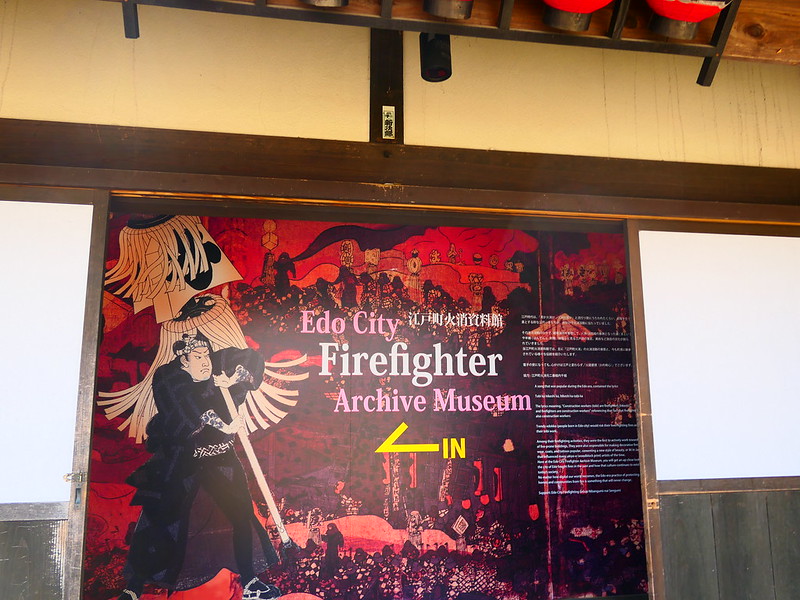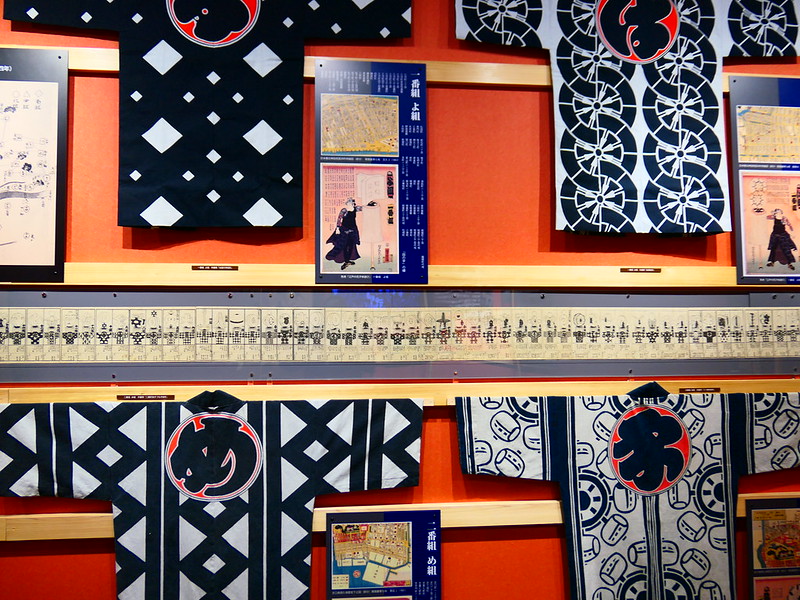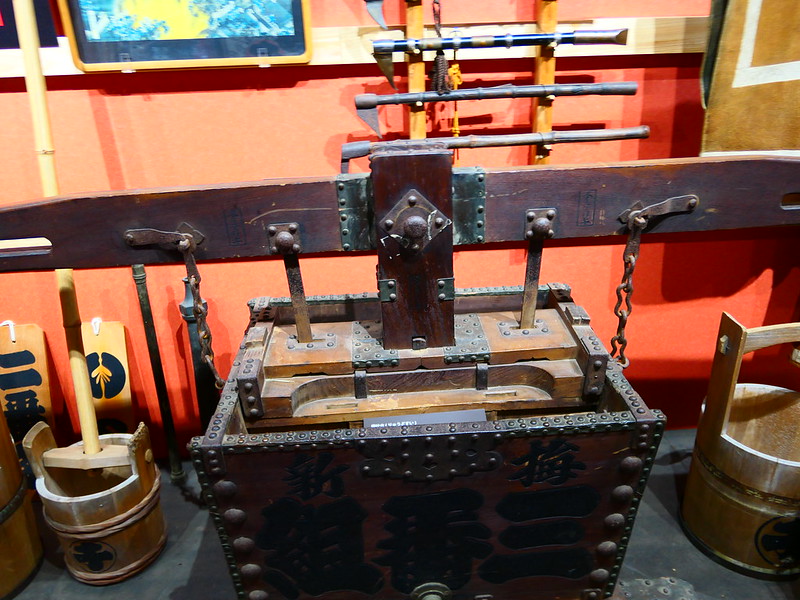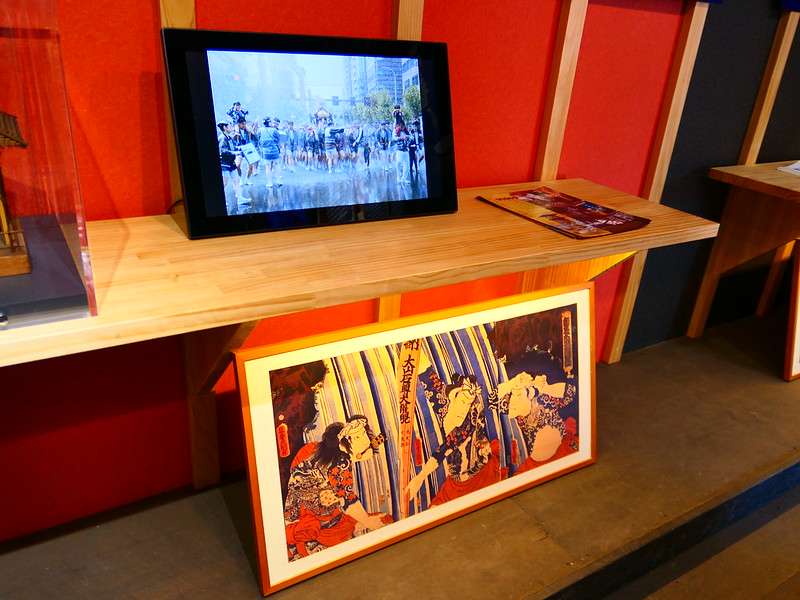
One of the coolest things to see at Edo Wonderland are a few of the museums inside the village.
These are not huge museums but they do feature some fascinating things from the past.
The first museum I went to was the Edo City Firefighter Archive Museum which features how firefighting was back in the day!
Also, the good news is that a lot of what is featured is in both Japanese and English.
But the reason why it was fascinating for me is that for anyone who studies Japanese history, you start to learn how fires were devastating to the point of widespread damage and loss of life.
In the Edo Period, fires were frequent during the Edo Period and areas in the city (primarily history shown great fires in Kyoto, Osaka and Kanazawa) were constantly being burned down and were rebuilt. While Tokyo was literally destroyed numerous times due to fire every 25-50 years due to earthquakes, tsunami, volcanic eruptions and war.
And one of the worst took place on March 2, 1657. Known as the Great fire of Meireki (or known as the Furisode fire), 60 to 70% of Tokyo (back then known as Edo) was destroyed.
The fire lasted three days and over a 100,000 people were killed.
The myth back then was a Shinto priest tried to burn a cursed kimono, as the previous three teenage girls who were to wear it, died before they could. Supposedly, when the priest burned the kimono, it burst into flames and a strong gust of wind blew the flames towards the wooden temple which burned it down and also spread to other wooden structures/homes around it.

What was known through historical accounts was that there must have been a typhoon or something that caused strong-intense winds and with homes were made of wood, straw and paper, it led to many homes and structures an easy target to spread the fire as many homes were built very close together.
But the more you study, the more you realize that the firefighters of the time, they really had to be innovative. How innovative? Check out this video:
So, without modern firefighting equipment, how did firefighters (hikeshi) back in Edo Period put out fires? This is what I found fascinating by visiting the museum.



The museum gets into how the fires would lead to the founding of firefighting groups featuring normal commoners. These groups were known as machibikeshi firefighting groups that took on fires in town. While, daimyobikeshi fought fires specifically for samurai and lords.
The hikeshi wore muti-layered cotton jackets which featured their firefighting group’s logo. Before they would go out to put out a fire, they would douse their jacket in water to make it a bit resistant to fire.
But you’ll notice the images with people wearing tattoos. Back in the day, firefighters who were commoners, local carpenters or guys who would be involved in streetfights were among the machibikeshi and they shown their loyalty by sporting tattoos.









A firefighter used a matoi to signal to other firefighters of a fire happening and because it was a competition of various firefighting groups (as the group who put out the fire would be rewarded for their efforts), to come out and use their tobiguchi (hooks) hooks to tear down the property on fire.
And of course, bamboo ladders (hashigo), buckets of water or traditional water pumps (ryudosui) were utilized.







Tomorrow, we’ll take a look at other museum and shops at Edo Wonderland!
